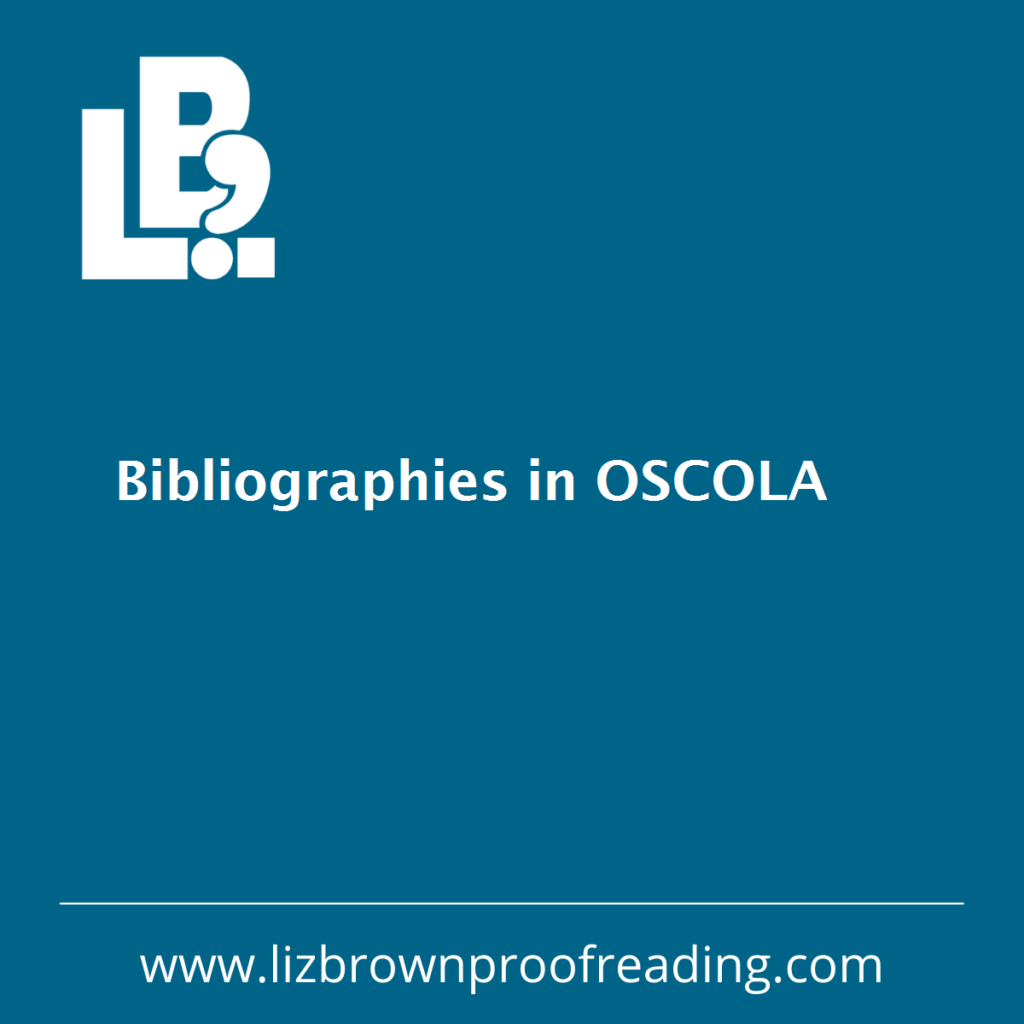Most law students’ and writers’ problems with OSCOLA formatting usually relate to the footnotes. The famous American philosopher described them as ‘little dogs yapping at the heels of the text’. However, bibliographies – that long list of all the works you’ve read (or should have read) in order to research your dissertation or thesis – cause just as much trouble. OSCOLA style has some specific rules for bibliographies. So, in this article we’ll take a closer look at bibliographies.
Is the format of citations in a bibliography different to citations in the footnotes?
The answer to this question is ‘Yes’ … and ‘No’. The format of each citation is virtually the same as for footnotes, so you can copy and paste from your footnotes to biblio or vice versa, but be careful – there are a few exceptions. Check out these two important differences, as they mean you’ll need to do a little bit of editing to ensure your biblio is OSCOLA compliant.
• The author’s name is reversed and shortened, so in the bibliography you just cite the last name followed by the initial. For example, Liz Brown (footnotes) becomes Brown L, (biblio).
• There is NO FULL STOP at the end of a bibliography citation.
Apart from this, a few more points to note are:
• List the works in alphabetical order based on author’s last name.
• If the author is unknown – unattributed – list the source at the beginning of the bibliography with a double em dash in place of the name.
• If the author has more than one work list them in chronological order and use a double em dash for repeats of their name.
• Also, with books and journals, there’s no need to cite the page numbers referred to in the bibliography citation.
What’s a double em dash?
There are two places where a double em dash is used in a bibliography. First, if the author is unknown, then start the citation with two double em dashes and then the book title, in italics. Place the citation of an unknown author at the beginning of the bibliography list. The second place is where there is chronological list of several works, use a double em dash instead of repeating the author’s name.
Here is an example of the double em dash in a bibliography:
Kennedy H, Eve Was Framed: Women and British Justice (Vintage 1993)
—— Just Law: The Changing Face of Justice (Vintage 2005)
How do I insert an em dash?
As I’ve described above, M or em dashes have a specific use in OSCOLA bibliographies. Whilst the hyphen is easy to find, it’s right at the top of your keyboard usually next to number 0, there are no special keys for N or M dashes. You can use various keyboard shortcuts, depending on which version of Word you have installed, or you can use the INSERT tab—symbols—special characters. I’m running Word via Office 365 where the keyboard short for an em dash is Ctrl+Alt+numerical minus. To create a double em dash, just follow this short cut twice ——
Avoid repetition
Another bibliography tip is that there’s no need to cite the electronic version of a source if a hard copy of the material is available. So, if a book has been listed under ‘books’ but you have also referred to an online copy of it, there is no need to cite it twice.
Citing electronic works
However, if you are citing electronic sources, such as websites and blogs, you’ll need to add the accessed date. In OSCOLA style there’s no need to start the citation with ‘available at’, as is sometimes the case with other styles. Just put the website information in <brackets> and at the end add ‘accessed’ plus the date. The date format is: day/month/year eg 17 April 2017
Should I divide my bibliography into sections?
One question that often arises is whether the bibliography should be divided into different sections. There seems to be some flexibility (or inconsistency) about this. The OSCOLA guide indicates that if the list of sources is long then it is sensible to split them up into categories. For example, books, journal articles, websites. However, clients have come across some law schools that prefer the bibliography to be one long list, in alphabetical order, that places all the works of each author together. It’s best to check your law school’s specific requirements about this if possible, or look at previous some examples.

